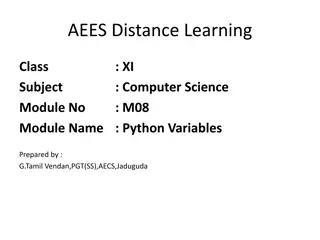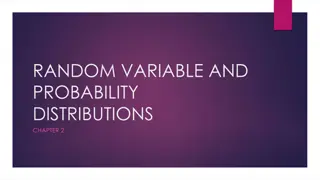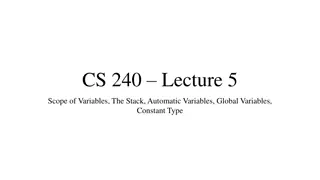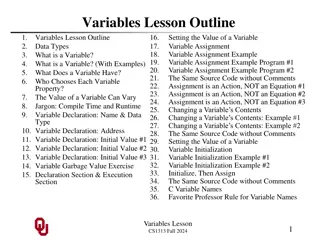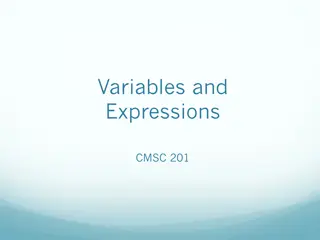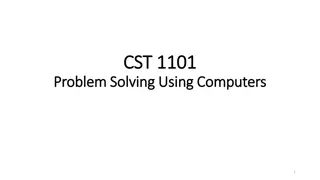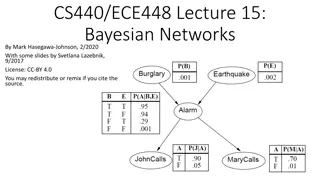
Understanding Population Sampling in Statistics
Learn about population, sample, parameter, sampling error, precision vs. accuracy, independence, and sample of convenience in statistics. Understand how these concepts are essential for unbiased data collection and analysis.
Download Presentation

Please find below an Image/Link to download the presentation.
The content on the website is provided AS IS for your information and personal use only. It may not be sold, licensed, or shared on other websites without obtaining consent from the author. If you encounter any issues during the download, it is possible that the publisher has removed the file from their server.
You are allowed to download the files provided on this website for personal or commercial use, subject to the condition that they are used lawfully. All files are the property of their respective owners.
The content on the website is provided AS IS for your information and personal use only. It may not be sold, licensed, or shared on other websites without obtaining consent from the author.
E N D
Presentation Transcript
POPULATION A population is the entire group we are interested in measuring, studying, or saying something about. This could be: * All residents of New York City between 18-24 years of age; * All patients with a specific form of cancer; * All trees in Yellowstone National Park; * All fish in the Hudson Bay
SAMPLE A sample is a subset of the population that is measured for the purpose of finding out about the population itself. Measuring an entire population is usually too cumbersome to manage. As a result, we resort to measuring a smaller group within the population Later, we use the measurements to say something about the population. It is crucial to be very careful about selecting a sample, to ensure that it is a representative sample to avoid bias.
PARAMETER A parameter is one (of possibly many) characteristic(s) that we are interested in measuring and/or estimating. The word parameter is used specifically to refer to the actual value of the characteristic across the entire population. We use samples to gather data in order to estimate these parameters.
SAMPLING ERROR Sampling error refers to the difference between the parameter (for the population) and the estimate (from our sample). Unbiased samples are more likely to result in a lower sampling error. Samples that are NOT representative of the population may result in a higher sampling error. Exercise: pair up and come up with an example of a population, sample and parameter and be prepared to discuss possible bias. After 5 minutes, you will be asked to share with a neighboring pairing.
PRECISION VS. ACCURACY Precision is determined by our methods for measuring parameters. Precision is indicated by consistency of repeated measurements. Accuracy is determined by the bias (or lack of bias) within our chosen sample. How can we determine accuracy?
INDEPENDENCE Selection of an individual should not influence the selection of any other participant. Example: When conducting interviews, you select a random participant and they re with a friend, who then also wishes to participate. How might this impact our results?
SAMPLE OF CONVENIENCE This sort of bias occurs when a researcher chooses to gather data from a readily available source. Example: In attempting to measure the cod population in the North Atlantic, researchers relied on the rates at which fish were caught by fishing boats. However, fishermen went to locations where cod were still more plentiful (duh!), leading to overestimation of the cod population.
VOLUNTEER BIAS Measuring human populations may often require volunteers to participate. There may be systematic differences in the volunteer population as compared to the entire population we seek to estimate. Volunteers may be: Be more proactive; Be lower-income (especially if participation is compensated); more desperate for treatment; have more time on their hands; more opinionated.
VARIABLES Variables are very closely associated to parameters. Variables refer to the individual characteristics themselves whereas parameters refer to the actual VALUES for those variables. Variables can be categorical or numerical
CATEGORICAL VARIABLES Categorical Variables are not readily quantified. Examples: * variables with a value of yes or no * eye or hair color * life stage (egg, larva, juvenile, subadult, adult) * comparative pain scale (discomforting, distressing, unbearable) Ordinal categorical variables have an implicit order. Nominal categorical variables have no inherent order.
NUMERICAL VARIABLES Numerical Variables are variables who s measurements are described with numbers. Examples: * temperature * height or weight * number of cigarettes smoked per day (or per week) Discrete numerical variables are integer-valued (1,2,3 ) Continuous numerical values are real-valued (15.71, 3.8)
EXPLANATORY VS. RESPONSE VARIABLES Explanatory: used as predictors of values for other variables. Example: hours spent studying per week Response: dependent on (or have their values affected by) the explanatory variable(s). Example: GPA
EXPERIMENTAL VS. OBSERVATIONAL STUDIES EXP ERIMEN TA L The researcher randomly assigns participants to experimental and control groups. Preferred. OBSERVATIONAL The researcher is not able to decide who receives treatment and who doesn t. Not always possible for ethics reasons.







